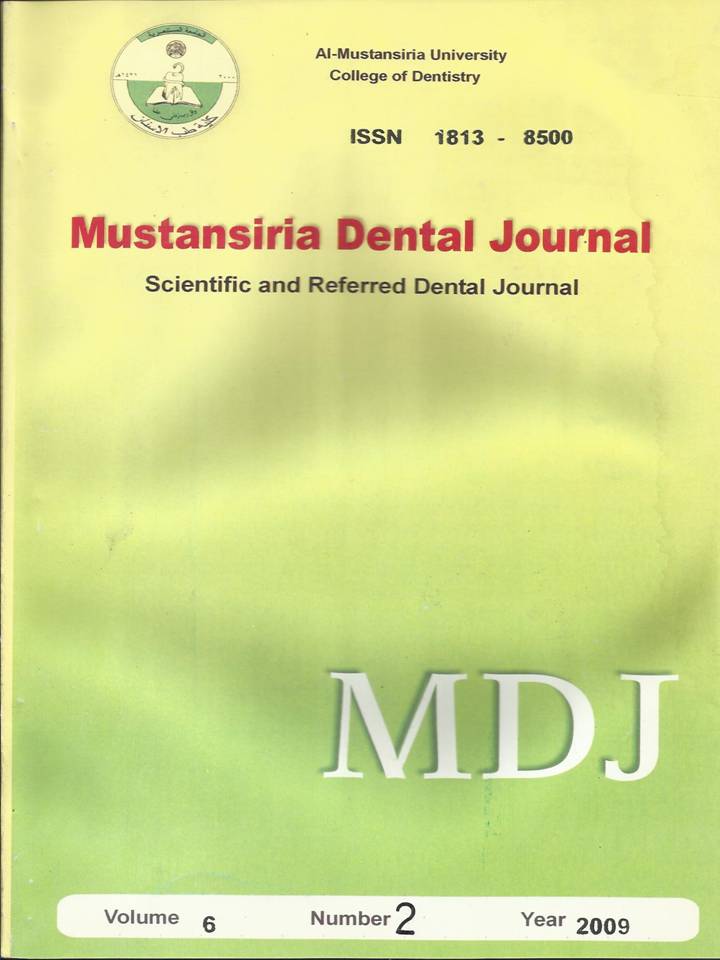An Orthopantomographic study of hypodontia in permanent teeth of Iraqi patients
DOI:
https://doi.org/10.32828/mdj.v6i2.442Keywords:
Key wards: Hypodontia, lateral incisors, congenially missing teeth.Abstract
The congenital lack of one or more permanent teeth is a common anomaly in man .By definition, congenitally missing teeth are those that fail to erupt in the oral cavity and remain invisible in a radiograph, which implies this caused by disturbance during the early stages of tooth development.
389 orthopantomograms of healthy patients were used the number of males were 194 and the number of females were 195.The patients has visited the hospital of college of dentistry of Baghdad university between 2006 and 2008.Thy were aged between 13 and 27years at the time the OPGs were taken .All OPGs were analyzed by viewer .The congenitally missing teeth were identify first clinically and confirm by the OPGs
The hypodontia mostly seen in upper lateral incisors, and lower second premolar, flowed by lower central incisors, upper central incisors, and lastly the lower lateral incisor, there were gender difference in hypodontia, but both genders show high percentage of upper lateral incisors hypodontia, 60.31%for males, and 72.30%for females. The hypodontia of lower second premolar in males 18.56%,and in females 14.5%.The hypodontia of upper central incisors in males 2.577%,and 0%in females. The hypodontia for lower central incisor in males 12.89%, and 13.3%in females. The hypodontia for lower lateral incisors in males 5.67%, and in females 0%.From these percentages it was clear that there were difference in hypodontia of upper and lower arches.
To evaluate the frequency of hypodontia and compare its appearance between males and females and between upper and lower jaw.
Downloads
Published
Issue
Section
License
The Journal of Mustansiria Dental Journal is an open-access journal that all contents are free of charge. Articles of this journal are licensed under the terms of the Creative Commons Attribution International Public License CC-BY 4.0 (https://creativecommons.org/licenses/by/4.0/legalcode) that licensees are unrestrictly allowed to search, download, share, distribute, print, or link to the full texts of the articles, crawl them for indexing and reproduce any medium of the articles provided that they give the author(s) proper credits (citation). The journal allows the author(s) to retain the copyright of their published article.
Creative Commons-Attribution (BY)









